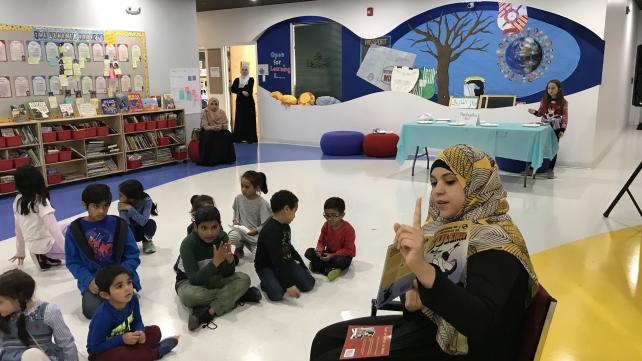
When exploring the topics of culture, faith, and spirituality in Latin America, many are surprised to find there is an enormous connection to Islam. The Islamic religion and the societies of North Africa and the Middle East greatly influenced all aspects of Latinidad, or the Latino identity. For more than 800 years, Spain, often called the mother of Latin American nations, was inhabited by Muslim North Africans and their descendants, who were referred to as the Moors.
In 711, the Muslim general Tariq ibn Ziyad, accompanied by an army of 7,000 soldiers, crossed the Mediterranean into Spain. The North African Muslims found the perfect opportunity to enter the Iberian Peninsula, realizing that the Visigoth government of King Rodrigo was weak and lacked support. Many Spaniards had protested the incompetence of his reign, and their cries reached the ears of the governor of North Africa.
It has been reported that when Ibn Ziyad’s army reached Spain, they burned their ships, determined to stay there for good and expand the Muslim empire. The strait that separates the peninsula from North Africa still bears the name of General Tariq ibn Ziyad – Jabal-at-Tariq or Gibraltar – which means "the mountain of Tariq."
After defeating the Visigoth army, the Moors continued their conquest to Toledo and established treaties with the Spanish. The land that was conquered by the Muslims, Southern Spain, was called Al-Andalus, now Andalusia.
During the centuries that Muslims ruled Spain, a pluralist democracy existed where people of all religions, mainly Christians, Muslims, and Jews, lived together in peace. Despite this, many residents converted to Islam willingly, as others had done in different parts of the Muslim world. A period of enrichment emerged in commerce, architecture, art, literature, science, and mathematics. It was the Golden Age of Islam, and Islamic Spain became a beacon of knowledge and progress. However, like all good things, eventually, this age of enlightenment came to an end.
“In 1492, Columbus sailed the ocean blue!” is a rhyme children are taught in grade school when learning about the explorer, Christopher Columbus. What history books fail to mention is that more than just Columbus and his Spanish ships, the Nina, Pinta, and Santa María, were leaving Spain that year. It was also during this time that a massive exodus of Muslims and Jews was taking place.
In 1492, the Catholic King Ferdinand and his wife, Queen Isabela, were successful in conquering the final Muslim stronghold in Granada, Spain. What followed were a series of edicts that sought to criminalize the practice of Islam, force conversions of Muslims and Jews to Christianity, and expel the Muslim and Jewish populations completely from Spain. Ironically, when the New World was just being “discovered,” the descendants of Islamic Spain were searching for a new home.
When Spain began to colonize Latin America, centuries of Islamic influence came aboard ships, despite all efforts of the Catholic rulers to suppress it. Dozens of exiled Muslims, many hiding their religious identity, fled to the New World, taking their culture and faith with them. Likewise, Muslim victims of the Trans-Atlantic Slave Trade also found themselves in the New World. Until this day, it is inevitable to travel anywhere in Spain or Latin America and not see the influence of Muslim culture. In the architecture, street names, artwork, gastronomy, and even in the DNA of its people. Latin Americans are walking and breathing relics of Muslim empires. Even in appearance, sometimes it is difficult to distinguish an Arab from a Latino or a North African from a South American or an African from a Caribbean. Not only is the resemblance in physical appearance striking, but also, the similarities in personalities and traditions. Latinos possess the God-consciousness, strength of family ties, spirit, and determination typical of faithful Muslims.
Hispanics Speak Arabic?
From the 13th to the 15th century, when the Muslim rule in Spain was at its height, Arabic was the official language in many parts of Spain. Being bilingual, Arabic-Spanish, was normal. In those times, Arabic was regarded as the language of the elite and the prestigious. Surprisingly, Spanish was written for a long period of time using Arabic script. This style of writing was called Aljamiado or Aljamía. Currently in the Spanish language there are more than 6,000 words of Arabic origin. The most famous Spanish expression in Spain, "¡Olé!" comes from the Arabic word "Wallah" which means "by God."
Arabic terminology was adopted to describe the various things that the Moors introduced to the Spanish. For example, words like café (coffee), alfombras (rugs), jinete (horse rider), tambor (drum), alcalde (mayor), aldea (village), algodón (cotton), arroz (rice), azúcar (sugar), aceituna (olive), and almohada (pillow) have Arabic roots.
The Muslim religion also influenced the use of certain words and expressions. One such term is ojalá which means “I wish” or “I hope”, derived from either "insha'Allah," or “lau sha Allah,” which means "God willing" or “If God has willed it.”
Latino Muslims in the United States
Could it be because of this undeniable influence that today many Latinos or Hispanics in Latin America and the United States are returning to Islam as their religion? The short answer is yes. Many Latino Muslims are drawn to religion because of the connection to their culture. As they begin to question Catholicism and Christianity and realize that historically, these faith systems were imposed on them by European colonizers, they also investigate other beliefs and are eventually led to Islam.
The presence of Muslims in Latin America does not only date back to the discovery and settlement of the New World. During and after the dismantling of the Ottoman Empire in the 19th and early 20th centuries, Muslims migrated to Latin America in massive numbers, and continue to do so until this day, bringing the number of Muslims and their descendants living in that region to millions. We often hear about the glory of Islamic Spain or Andalusia, but we ignore that the legacy of Muslims in Spanish and Latino culture lives on.
In all Latin American countries there are mosques, or Islamic centers, where Islam is practiced. In the United States the existence of Muslims of Latin origin grows daily. More than six percent of the seven million Muslims currently in the United States are Latino. The highest concentrations of these Muslim Latinos live in cities with the highest Hispanic populations such as New York, Chicago, Houston, Miami, and Los Angeles.
Latino Muslims have been present in the United States for decades, and have even been involved in championing the struggle for civil rights since the 1960s. Due to the growing need for Spanish resources, and to fulfill the needs of Latin American Muslims in the U.S., many organizations have been established with the purpose of tackling the challenges of living as a minority within a minority. There are Hispanic-led Islamic groups spread across the U.S. that offer services that range from outreach and mentorship to social services and disaster relief. Some examples are the Latin American Dawah Organization or LADO, PIEDAD, ¿Por qué Islam? (WhyIslam’s Spanish department), Ojalá Foundation, Outreach in the Barrio, the 3 Puerto Rican Imams, Islam In Spanish, Hablamos Islam, CAIR Español, and others.
It is no secret that the Muslim population is growing day by day in the United States due to many factors that include immigration, birth rates, and conversions. Of those conversions, the fastest growing minority in Islam are Latinos, just as they are the fastest growing population in the U.S. The interesting thing about Muslim Latinos is that they can trace their roots back to Islamic Spain, West Africa, and the tribes of the Americas that may or may not have also been introduced to Islam. When they embrace Islam, they are tracing their heritage rooted in centuries of Islamic influence. Islam offers a return to a glorious past, a connection with the Almighty, and the promise of victory in the Hereafter.
Wendy Díaz is a Puerto Rican Muslim writer, award-winning poet, translator, and mother of five. She is the co-founder of Hablamos Islam, Inc., a non-profit organization that produces educational resources about Islam and culture in Spanish. She is also the Spanish content coordinator for the Islamic Circle of North America’s WhyIslam Project and a columnist for MuslimMatters.com. Díaz has also written, illustrated, and published 10 children’s books. She is a frequent speaker at major conferences.







Add new comment